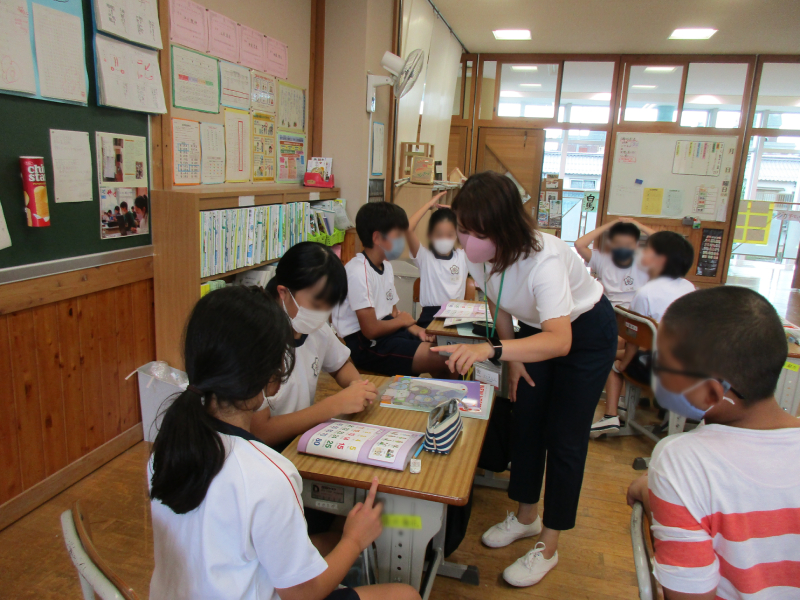'I take pleasure in the little things here': Singaporean teacher is loving life in rural Japan


 PUBLISHED ONNovember 10, 2022 7:37 AMByAmierul Rashid
PUBLISHED ONNovember 10, 2022 7:37 AMByAmierul RashidWith Japan easing border controls in October 2022, many Singaporeans would have celebrated the news by planning a trip there.
One particular Singaporean did not need to.
Jasmine Lim calls Japan home and, even throughout a world pandemic, she hasn't regretted her decision to move overseas two years ago.
What makes her experience unique is that she decided against relocating to big cities like Tokyo or Osaka.
Instead, the 34-year-old teacher headed for Tottori, Japan's least populated prefecture.
She tells AsiaOne about her path from a preschool teacher in Singapore to an assistant language teacher in Tottori, and how experiences along that journey have molded her into the person she is today.
In 2019, after more than a decade of being a preschool teacher, Jasmine quit her job.
This might seem to be counterintuitive given that she had always set her sights on early childhood education.
"Actually, when I was a primary school student, my dream was to become a kindergarten teacher," she reveals.
Jasmine managed to turn that dream into reality but over the years, the stressors that come with the job were taking a toll on her.
"Towards the end of my career in early childhood education, the parents are demanding and sometimes they can be pretty reasonable," she says.
While deciding on what to do next in life, Jasmine travelled to Japan and volunteered for three months.

With lodging and food covered, she worked at organic vegetable farms, a dairy farm and a ski resort for free.
In what would turn out to be a life-changing experience, she met an Australian woman who worked as an Assistant Language Teacher (ALT) in Japan.
The woman shared more about the Japan Exchange and Teaching (JET) programme she's under.
ALT participants are placed mainly in public schools or local boards of education and they assist with classes taught by Japanese Teachers of English (JTE).
Jasmine was intrigued and signed up for the programme upon her return to Singapore. She waited patiently throughout the application process and arrived in Tottori in 2020.
If working in a foreign land isn't daunting enough, how about doing so with minimal command of the language?
Jasmine recalls how back then, she only knew basic greetings in Japanese.
These days, she can speak the language but mentions how it isn't "progressing as fast" as she wants it to be.
The JET programme allows participants to choose their preferred locations — city, rural or island. Jasmine went with rural and she was placed in Yazu, a town with "very little people".

In Yazu, Jasmine isn't an early childhood educator. Instead, she teaches English at three different schools — two elementary schools (primary schools) and a junior high school (secondary school).
These schools must be in close vicinity as work is a short 10-minute walk from home.
During the English lessons, Jasmine and a JTE team teach the students.
"We're considered native speakers of English [and] a lot of Japanese teachers don't really have the accurate pronunciation of English words. [It can] sound very 'Japanese'.
"Of course, some of them can speak really good English. Why we are there is because they want the students to also listen to different accents around the world," Jasmine shares.

What took Jasmine by surprise is how the Japanese students can understand English but are too shy to use it verbally.
A method she used to overcome this barrier is to incorporate "Singaporean things" into her lessons and hopefully pique the interest of the students.
Jasmine recalls a day when Hainanese chicken rice was on the school lunch menu.
The school lunch centre did its research and modified the dish to best fit the Japanese taste but Jasmine wasn't complaining one bit. Having students enjoy the dish and telling her how delicious it is simply made her day.
When it comes to her working hours, teachers in Singapore might look on in envy. Jasmine begins work at 8am and ends her day at 4pm.
How's that for work-life balance?

Living in Yazu has given Jasmine the chance to try out a plethora of activities she would never have even considered when she was back in Singapore — from fruit picking to rice harvesting.
The self-declared introvert mentions that a "pre-Yazu" Jasmine would usually spend her free time at home simply using her phone or reading a book.
But during her time in Yazu, she's become a more active individual.
"I take pleasure in like the little things here, like cycling across the rice fields. That's one of the best things I've experienced in life."
Jasmine appreciates nature and hiking has helped her enjoy it even more.
She recently hiked up Mount Daisen. This dormant stratovolcano is no joke, it has an elevation of 1,729 metres and is the highest stratovolcano in the Chugoku region.
Jasmine believes that a change in her character has helped unlocked these experiences, and all these began when she started living alone in Yazu.
"When you're alone, you crave for company, right?"
So she put herself out there to meet new people and try new things.
Jasmine let out a giggle as she attempts to answer our question about encounters with other Singaporeans in Yazu.
"The last I checked on a spreadsheet by the Japanese government, there are two Singaporeans [including herself] in Tottori prefecture but I don't know who the other person is and I cannot find him!" she adds.
Not that it matters too much, Jasmine is doing just fine.
ALSO READ: Singaporean ex-lawyer who quit her job at 29 and retired at 38 shares how you can do the same
amierul@asiaone.com
No part of this story or photos can be reproduced without permission from AsiaOne.